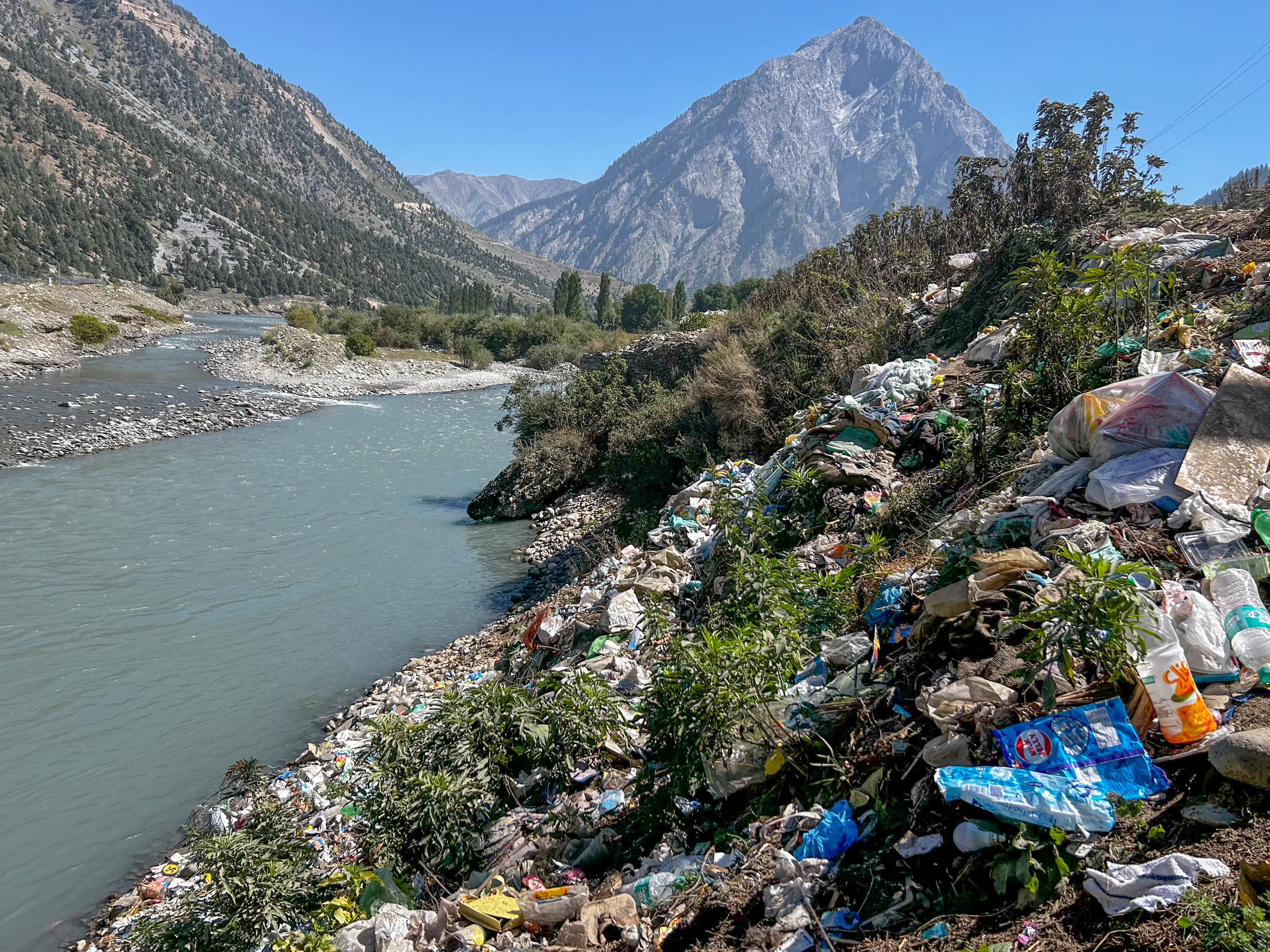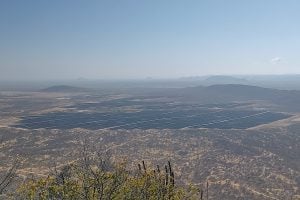The Gurez Valley lies on the Indian side of the Line of Control, which separates the two parts of the former princely state of Jammu & Kashmir between Indian and Pakistani administration.
Its location – in a militarised zone between two nuclear-armed adversaries – might be one of the reasons why this area has seen limited infrastructural development. But in the years since Covid-19 emerged, a drive to increase tourism is compromising what is an important ecosystem.
“Uncontrolled concrete construction [is] happening in Gurez,” says local resident Muzammil Khan. He recalls when there was just one wooden, six-room guest house in Dawar village. In the last three to four years, “more than 20 guest houses, 10 multistorey hotels and numerous homestays” have sprung up in the small valley. Khan, 29, presides over the Youth Association of Gurez, an NGO working to preserve the area’s environment and culture.
Khan’s association has no problem with development in the area, only the way it is being done. Arsalam Aslam, another member of the association, tells Dialogue Earth the “core and immediate demand of our association is that our area should be developed strictly in light of environmental laws”.
Gurez is home to a rich array of flora and fauna, including musk deer, and the endemic fish species that populate the area’s Kishanganga River. Khan says increased tourism and its associated infrastructure will put pressure on these habitats and the river’s water quality, “especially in the absence of a sewage treatment facility”.
Underused laws
The weak implementation of environmental laws is a significant problem in the Kashmir Valley, according to environmental experts. Faiz Bakhshi, a noted environmentalist, says “there is nothing wrong” with the Jammu & Kashmir Forest (Conservation) Act and the Environment (Protection) Act, but “they are not being implemented strictly.” This, says Bakhshi, “results in serious environmental damage as it is now being witnessed in Bungus Valley and Gurez”.
What I have observed is that environmental laws are given a pass during tourism infrastructure creation and tourism promotionSaleem Beg, conservationist and former director general for tourism in Jammu & Kashmir
Like Gurez, the Bungus Valley is environmentally significant. “The Bungus Valley is unique in offering the peculiar attributes of a grassland ecosystem typically characterised by short grasses, and habitat to a rich biodiversity of flora and fauna, including musk deer, pheasants and monal,” says Sami Ullah Bhat, an environmental expert and professor at Kashmir University’s environmental science department. He expects improved access and subsequently higher visitor numbers to increase solid waste pollution.
Dialogue Earth also spoke to Saleem Beg, a prominent conservationist and former director general for tourism in Jammu & Kashmir. He now heads the Jammu & Kashmir department of the Indian National Trust for Art and Cultural Heritage (INTACH). “What I have observed is that environmental laws are given a pass during tourism infrastructure creation and tourism promotion,” Beg says.
Beg recalls efforts to protect the region in 2006. “The Ministry of Tourism commissioned a study for the development of Bungus Valley,” he says. “INTACH was asked to do the study, and we proposed declaring Bungus a biosphere, where the main Bungus would be a core area protected from man-made intervention, such as infrastructure development. But today, Bungus is facing a threat like Sonamarg and Doodhpathri [developed tourist destinations].”
Environmental protections are accommodated in the government of Jammu & Kashmir’s tourism policy, established in 2020. It says the tourism department “will ensure development of sustainable and eco-friendly tourism by considering social and environmental aspects”, and “high standards of sanitation and hygiene will be maintained in all tourist destinations.” It also says “new structures and expansions” in “ecologically sensitive zones” must be undertaken in accordance with the Forest Conservation Act, the Environment Protection Act, and any other pertinent acts or rules.
In practice, these guidelines are often not followed. That is according to Rasikh Rasool, a local environmental activist who filed a public interest litigation case with India’s National Green Tribunal in May. He seeks its intervention over haphazard construction in and around the Bungus Valley. “There are clear guidelines in the Forest Conservation Act that a road should be only constructed through a forest if there is no alternative,” explains Rasool. “But the concerned department of the government chose to construct a road through an unlocked, thick forest, despite two other roads leading to Bungus Valley.”
Rasool alleges the road project included felling at least 25,000 forest trees. However, in its June 2024 report to the National Green Tribunal, the government acknowledged the removal of “1,023 deodar, kail and fir trees” only.
Furthermore, Rasool says over half a million tourists have visited Bungus in the past two years, without any arrangements in place for treating the resulting solid and liquid waste.
In recent weeks, both the local and national press have highlighted how the Gurez and Bungus regions are suffering from pollution and mismanagement.
The impact of mass tourism
At the end of August, India’s tourism minister proclaimed that the sector’s contribution to the national economy would rise from 7.9% to 10% before the end of the decade. Ten days later, Jammu & Kashmir’s commissioner secretary of tourism, Yasha Mudgal, pushed this agenda at a World Bank gathering, saying: “The need for development of additional tourist spots [is] to relieve pressure on the traditional ones, which are being explored beyond their carrying capacity.”
Citing Bungus and Gurez, Beg says the government’s promotion of lesser-known tourist destinations means “ecologically sensitive areas are being heavily intervened [in].”
Common for Indian cities, Master Plans are government documents designed to regulate land use within urban boundaries
Evidence of tourism surges outpacing the government’s efforts to regulate or plan can be seen in traditional sightseeing areas like Sonamarg. A 2020 scientific study used high-resolution satellite data to discover that, by 2015, Sonamarg had already “crossed the level of the projected developmental activities set out under the Master Plan for 2025”. The plan proposes using approximately 60 hectares of land for infrastructure development through to 2025; the study identified approximately 58 hectares in Sonamarg that had already been used for this purpose by 2015.
Several attempts by email, telephone and in person have been made to obtain comments from Mudgal, as well as from Kashmir’s director of tourism, and its divisional commissioner. At the time of publication, Dialogue Earth had yet to receive a response.
Heeding the disasters of Himachal and Uttarakhand
In Gurez, Muzammil Khan is concerned about the future. In response to an application for information, local government officials told him Gurez received 46,026 tourists in the 10 weeks between 1 May and early July. Khan estimates that, before 2019, tourist numbers for the whole year would remain in the thousands, and not reach the tens of thousands.
According to Sumit Mahar, similar tourism surges have “already been disastrous” for the Indian Himalayan state of Himachal Pradesh. Mahar represents the area’s Himdhara Environment Research and Action Collective. He points to the opening of the Atal tunnel in 2020, which enabled annual visitor numbers to grow from 130,000 to 740,000 by 2022. Mahar adds that alleged substandard road construction also exacerbated the impacts of the state’s 2023 floods.
In Uttarakhand, another Himalayan state in India, Mahar claims “mountains were cut indiscriminately” for the Char Dham road project, “ignoring environmental standards to bring more tourists”. He says “its consequences are witnessed in the form of landslides, cracks [in houses] in villages and the drying up of water sources.”
Mass tourism, observes Beg, “cannot be stopped in a country like ours, where hoteliers, travel agents, the burgeoning middle class and – above all – the government is fuelling tourism promotion”. He urges the government “to not facilitate cheap accommodation” as one way to stem the sprawl of low-quality development.
Khan says these are warnings that Kashmir cannot afford to ignore. “There is an urgent need for controlling and regulating tourism in Gurez Valley. Who will come to see Gurez if this destruction continues?”












